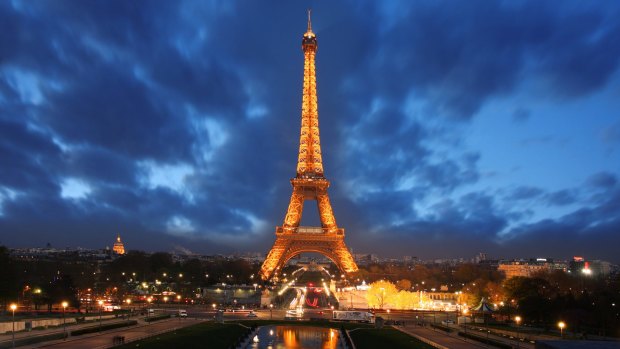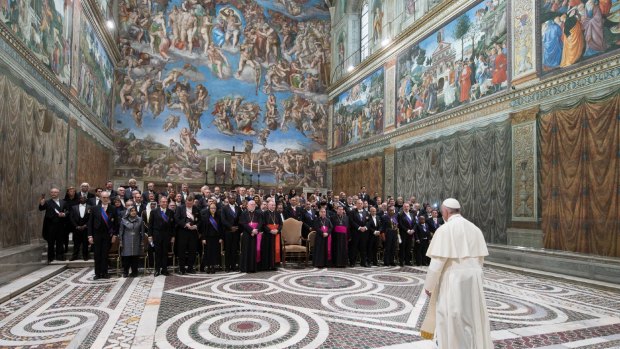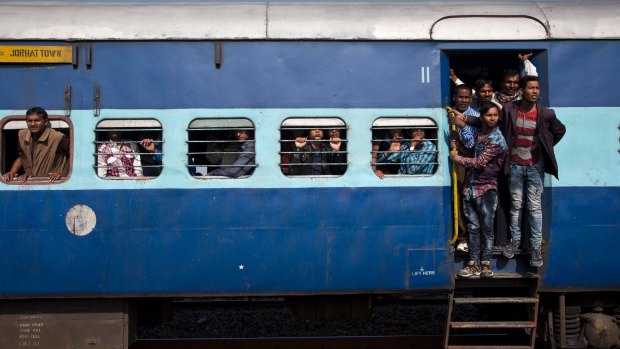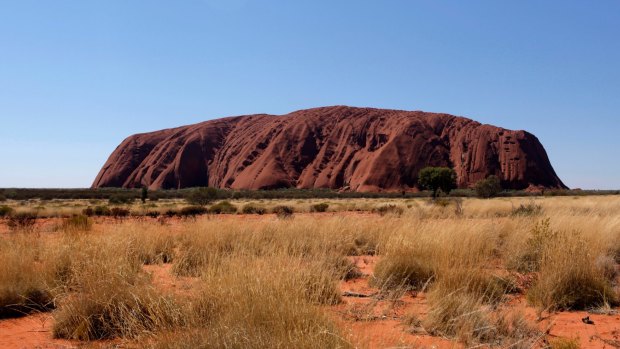This was published 5 years ago
Travel photography: Bizarre things you're not allow to take photos of

Don't post photos of the Eiffel Tower at night on social media - it's copyrighted (though good luck enforcing it).Credit: Shutterstock
In an age when everyone with a smartphone has a high-resolution camera handy in their pocket or handbag, when social media sticks its beak into every crevice of human existence and nothing is too private to be off-limits, it might seem that you can sally forth into the world and blaze away at whatever and wherever takes your fancy – but hold that trigger finger. In fact there are plenty of places where photography is forbidden. The list includes military establishments and infrastructure, government buildings, airports, temples, beaches and even in some cases works of art.
Copyright
Night photos of the Eiffel Tower are perfectly OK, but publishing those images on social media, pas du tout! That's because of the light show, which transforms the Eiffel Tower from an engineering tour de force into a work of art, and therefore copyright applies, according to the Societe d'Exploitation de la Tour Eiffel.

Pope Francis arrives to pose for a family photo with diplomats inside the Sistine Chapel. Tourists aren't allowed to take photos in here.Credit: AP
The ban on all photography in the Sistine Chapel is another curious example, and it has nothing to do with religion. Back when the Vatican was casting about for a corporate sponsor to restore Michelangelo's famous ceiling, Japan's Nippon Television Network Corporation stumped up $US3 million. In return, NTN got exclusive rights to stills and videos of the restoration process plus rights to all images of the restored work.
The deal spawned many docos and art books and although NTN's exclusivity expired in 1997, the ban still applies. It has been speculated that the continuation of the ban has nothing to do with NTN but rather a nod and a wink to the postcard sales department in the Vatican Museum Shop.
Shops can also be protective for the same reason, and especially the shops you're most likely to photograph – mask shops in Venice, or antique sellers in Hungerford, Berkshire. Some will even shoo you away from their window displays but if you're outside and not on their property they have no legal right to stop you.
Craft shops with one-off designs are wary of people stealing their designs and duplicating, or maybe getting the equivalent of an Airtasker to knock up a glass vase, a jumper or a quilt at a knockdown price. Malls might not like it because of commercial sensitivities but they probably won't object if it's a smartphone.
Security

Credit: AP
Point your camera at a defence installation, military aircraft at an airport, naval bases or military personnel and you might find yourself having an unexpected conversation with someone in uniform. The more sensitive a country is about its security the more likely it is to be prickly about photography of anything related to the military, and so North Korea, Israel, Pakistan, Russia, India and most countries in Africa require circumspection.
There are some surprising items on the do-not-photograph list. Railway stations and bridges in India for example, since they're regarded as a strategic asset, although in an era when just about every Indian citizen over 18 has a phone camera the bans are ignored.
Snap a photo at an airport security checkpoint, baggage hall, screening device or security personnel and you're potentially in hot water. That high security is there for a reason, and the layout, the way security procedures operate and how they're staffed and by whom are all matters of potential interest to terrorists.
For a similar reason you can't photograph inside baggage reclaim areas of international airports, lest you be looking for ways to import prohibited substances without attracting the attention of those who would stop you.
Shops don't exactly forbid photography but they don't like it, and again security is the reason. Why would you photograph a wall of paint tins, or the inside of a chemist's shop unless you were casing the joint to see where the cameras are?
Deterioration of artworks caused by camera flashes
Some galleries – Granada's Alhambra, Amsterdam's Rijksmuseum, London's Tate, Paris' Louvre – allow photography but ban flashes. The reason given is that light bleaches colour, and the effect is cumulative. Blast a painting with enough flashes, the theory goes, and the colours will change. However a 1994 British study showed that a painting exposed to a single flash from a typical amateur camera at a distance of 2.5 metres exposes it to about the same amount of light as it would per second under normal gallery lighting.
There are other reasons that galleries might want to prevent flash photography, but damage to their artworks is scarcely credible. Some gallery attendants sigh wearily and wag a finger at flashers, but fire a flash in the Hermitage in St Petersburg and expect a smackdown from the ever-watchful guardians.
Religious and cultural sensitivity

Credit: Michele Mossop
Many famous churches ban photography, The list includes St Mark's Basilica in Venice, Notre Dame in Paris, the Church of Santa Croce in Florence and Scotland's Rosslyn Chapel, made famous by Dan Brown's Da Vinci Code. Many more churches in Italy also forbid it to avoid disturbing worshippers but the rule is rarely enforced.
Hindu and Buddhist temples throughout Asia often forbid photography and so do Parsee places of worship. About half of Uluru/Ayers Rock is off limits to photography out of deference to the Aboriginal owners of the site, since there are several sacred sites in the rock face.
In mosques, ask, but quite often the answer is "yes", including such stunners as the Blue Mosque in Istanbul. Several years ago I was taken around the Umayyad Mosque in Damascus, one of the holiest of all Islamic sites and probably one of the most beautiful. My guide pointed out a highly decorated pavilion which contains relics of John the Baptist, sacred to Islam as well as Christianity. "Why aren't you taking pictures?" he asked. "And get some of those guys praying over there as well, no problem."
The communist and former communist regimes have a curious reverence for the corpses of their dead leaders that rivals the veneration of dead saints in Sicily. Strict protocols apply to the thousands who shuffle daily past the embalmed corpses of Mao Zedong, Ho Chi Minh, Kim Il-sung, Kim Jong-il and Lenin at their respective mausoleums, and that includes a total ban on photography, talking, smiling and coughing. Same applies to the soldiers who guard these high temples to some of history's most accomplished mass murderers – no close-ups.
Sign up for the Traveller newsletter
The latest travel news, tips and inspiration delivered to your inbox. Sign up now.